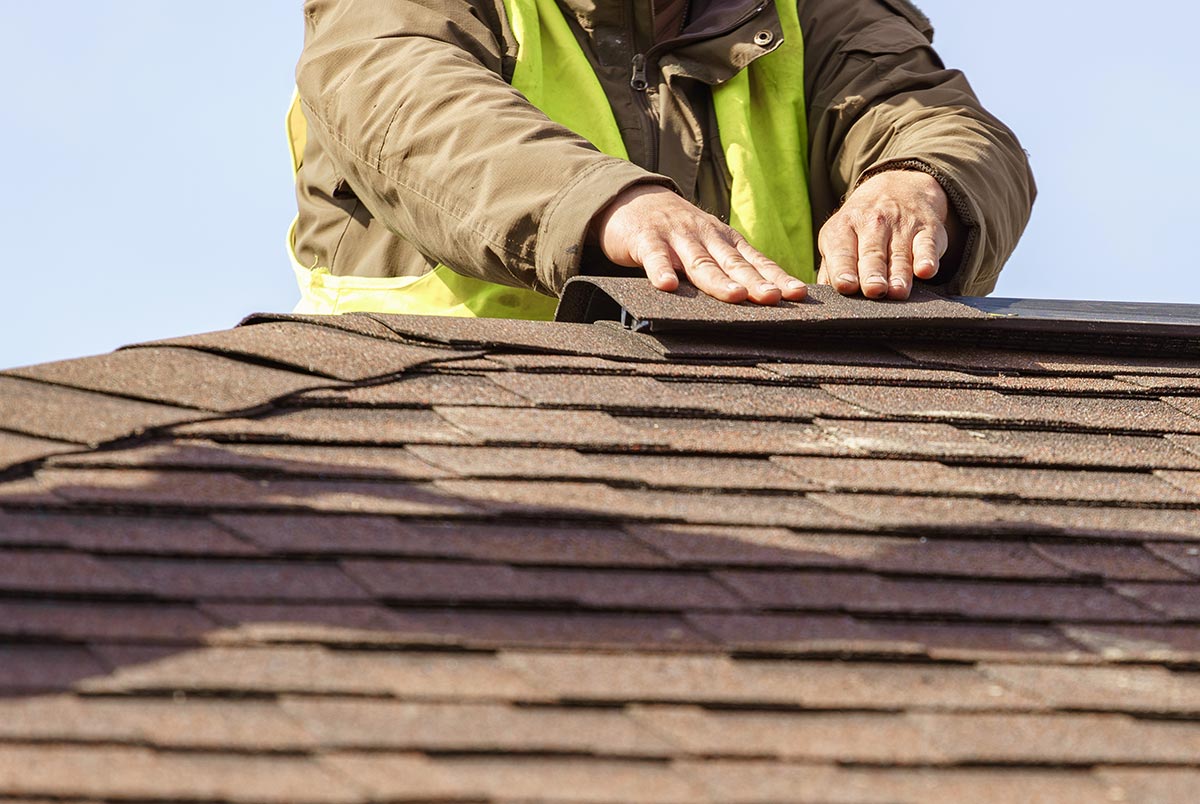It rarely snows in Las Vegas, but it's still advisable to prepare your roof for the winter season. Even without significant rain, gusty winds pose a threat to the structural integrity of your house. Although it's advisable to hire a professional inspector at least once annually, you can perform some basic roof maintenance tasks. These precautionary measures help you identify or prevent small problems before they snowball into costly complications.
Practical Roof Maintenance Tips for Homeowners
1. Survey & Clean Your Gutters
Gutters form an essential part of your roofing system. Although debris accumulation and clogging can be a nuisance at any time, they can worsen during winter. If gutters can't guide melted snow and rainwater down from your roof, it may start pooling and can cause leaks. Water damage ultimately affects the interior, which compromises your entire house.
Regular gutter cleaning is a critical roof maintenance task that you should ideally perform at least twice a year. It removes leaves, bird feathers, and other debris that hinder the smooth flow of water. This simple activity utilizes simple tools that you already have around the house. They include a sturdy ladder, trowel, buckets, fitting shoes, and protective gear such as work gloves and safety glasses.
Start the cleaning process near the downspouts. With your gloves on, pull out twigs and other debris. Remove and clean out any strainers if you have them. If the water doesn't drain out, you might have to remove some bands. You can also fit your hose into the downspout and open it at full pressure. Once unclogged, flush the whole gutter to remove any remaining debris.
2. Check the Roof for Leaks
 Roof flashings are an excellent leak prevention component. Their composition includes galvanized metal, aluminum, and other impervious material. Located around roof joints and intersections, they guide water off the surface and prevent it from penetrating the structure. Strong winds and inclement weather increases wear and tear. Over time, they cause the flashing to rust or become loose.
Roof flashings are an excellent leak prevention component. Their composition includes galvanized metal, aluminum, and other impervious material. Located around roof joints and intersections, they guide water off the surface and prevent it from penetrating the structure. Strong winds and inclement weather increases wear and tear. Over time, they cause the flashing to rust or become loose.
That's why you need to survey them regularly as part of your roof maintenance routine. This task is easier if you have a flat slope. Steeper roofs require the utmost safety precautions. Avoid climbing after rain, as slippery surfaces may pose a health risk. If you don't feel comfortable, hire a professional roofer to do a thorough inspection.
3. Inspect Your Roof Shingles
Similar to flashing, roof shingles experience wear and tear during winter. The older your roof is, the higher the likelihood of having loose or missing shingles. An inspection of your gutters also provides insights into the state of your roof’s shingles. If you start seeing granules together with other debris, it means they're faulty. Other signs of damaged shingles include curling, as well as trapped leaves and twigs.
Shingle replacement is a fairly routine procedure that saves you expensive future repairs. Most of them are held in place by nails and sealant. It's easier to pry this glue off in cooler weather because high temperatures make it stickier. Low temperatures also make shingles stiffer, so remove them gently to avoid distortion. It's advisable to lift the nails together with the shingles using a pry bar.
Once you remove the target shingles, slide in the replacements, nail them into place, then seal them.
4. Trim Trees Close to Your Home
Although they provide a natural shade around your compound, trees close to your house can also adversely affect your roof. Their leaves, twigs, and other debris accumulate in the gutters, which reduces or blocks the flow of rainwater. Storms break large branches or entire stress, which can cause massive damage if they fall on to your roof.
Always leave large pruning jobs to professionals. You can do smaller trimming chores if you have the right tools. The three must-have equipment pieces to complete small trimming chores are sharp pruning shears, loppers and pole pruners. Put safety first while trimming your trees. Avoid climbing ladders and cutting extra thick branches that your tools can't handle. Remember to steer clear of power lines. Arborists don't recommend trimming more than a quarter of a tree's branches in one setting.
5. Don't Forget the Attic & Ventilation
The attic is another crucial aspect of your roof maintenance schedule. Improper insulation can cause the formation of ice dams. Other than water damage, your house will lose heat while letting in cold air. This energy inefficiency causes high utility bills. The heat that escapes from your attic also curls shingles. Fire experts attribute most unsolved fires to rodents that chew and expose electrical wiring in the attic.
Grab a strong flashlight when climbing to this part of the house so you can have a clear view of all sections. You might want to take a camera as well. If you record any anomalies, you can send the images to your roofing expert for a professional analysis. Ensure you step on the rafters to avoid further damage. If the plywood below your roof has watermarks, it means your roof is leaking.
Another sign of leakage is ductwork with condensation around it. Others include mold and moisture, a crumbling chimney, and insufficient airflow in the attic.
If you follow these roof maintenance tips, your house will be in the best possible shape once winter starts. Other than saving costs by fixing minor issues, you can furnish your roofing contractor with a comprehensive list of specific problems they should solve.
FAQ About Roof Maintenance
In the course of preparing your roof for winter, you may have to make these inquiries:
Which is the best shingle for inclement weather?
Asphalt shingles are popular in Las Vegas and all over the US. They are affordable, easy to install and flexible. They also last for at least two decades before requiring replacement. Other types that provide both aesthetic value and functionality are concrete, slate and clay tiles.
How do I prepare my chimney for winter?
Have a qualified contractor clean it at least once a year. This exercise removes a potentially dangerous buildup of flammable materials in the chimney. Trim any tree branches close to it, and install a shield to prevent sparks from jumping onto your rugs and furniture.
Will a skylight complicate matters?
Inspect your skylight during roof maintenance checks for any cracks. It's advisable to do so on a clear day. Prevent leaks by sealing it with caulking or flashing. Remove glass stains with water and mild soap, then wipe with a lint-free fabric. Examine the drywall around it, as well as the gears for defects.
How do I avoid roof ventilation problems?
If your attic has moisture buildup, you can install an electric-powered fan together with a thermostat. This setup allows the fan to operate all year round without constant scrutiny. The thermostat will switch on whenever there's high temperature or humidity. This installation also works well with vented soffits.
Regular Inspections Are the Best Way to Increase the Lifespan of Your Roof
First Quality Roofing & Insulation is Las Vegas's premier roofing contractor. Our services include roof repair, attic insulation and roof replacement. Our team of highly skilled and experienced roofers is always ready to address your roof maintenance needs. With several awards under our belt and glowing testimonials from our clients, we guarantee durable roofing solutions. As an added benefit, we facilitate financing for eligible clients. Please contact us today at 702-262-7847 for more details on winter roof maintenance.
















